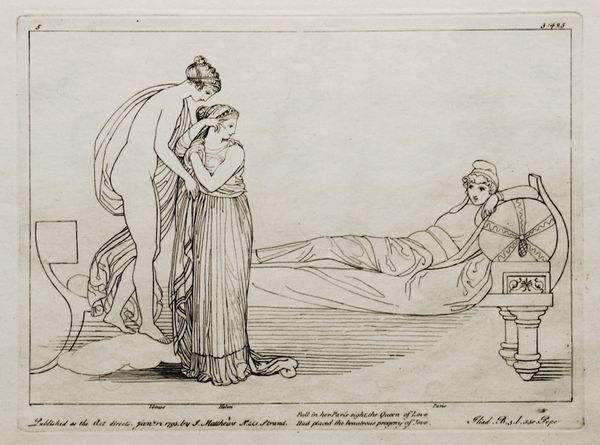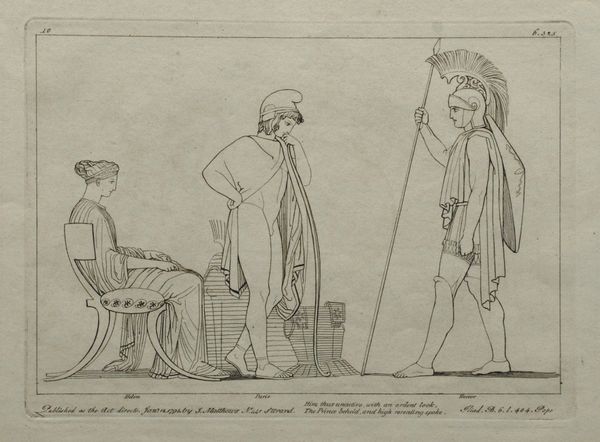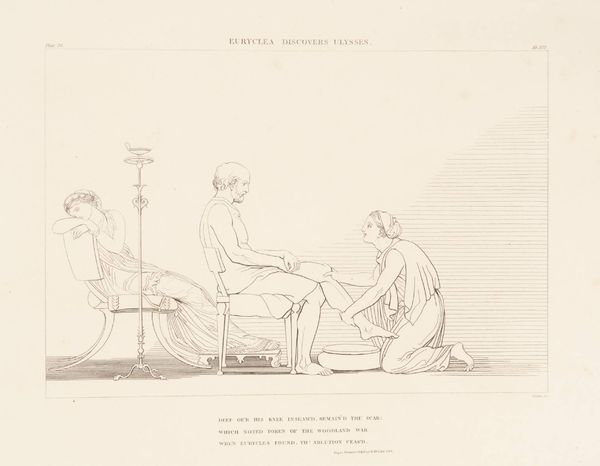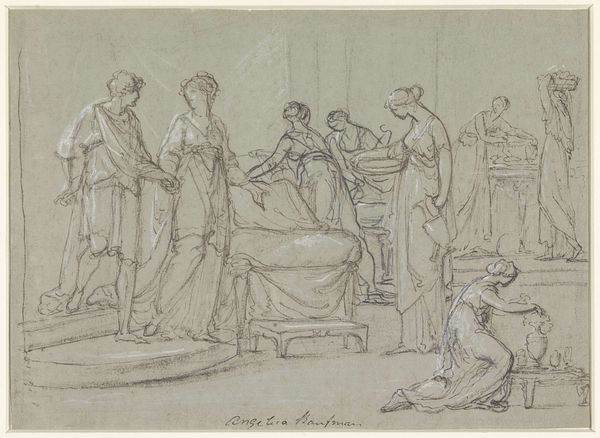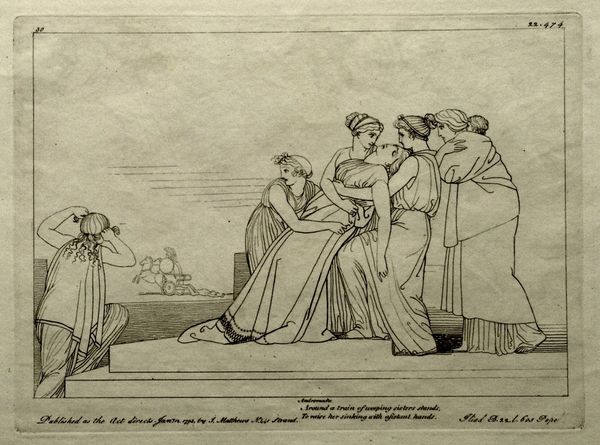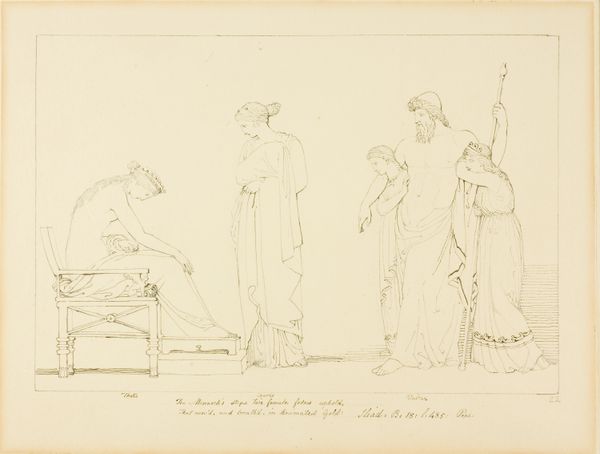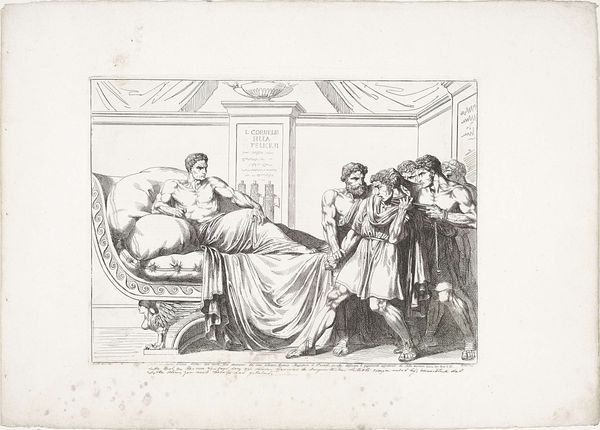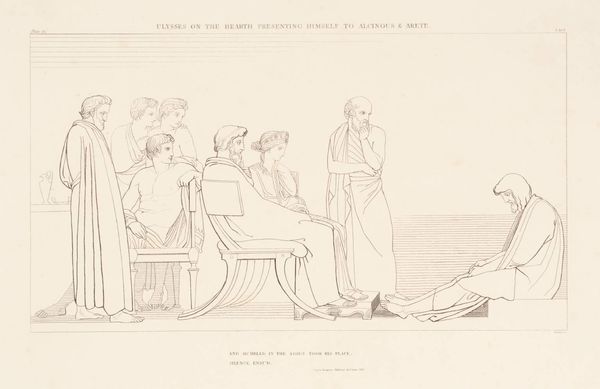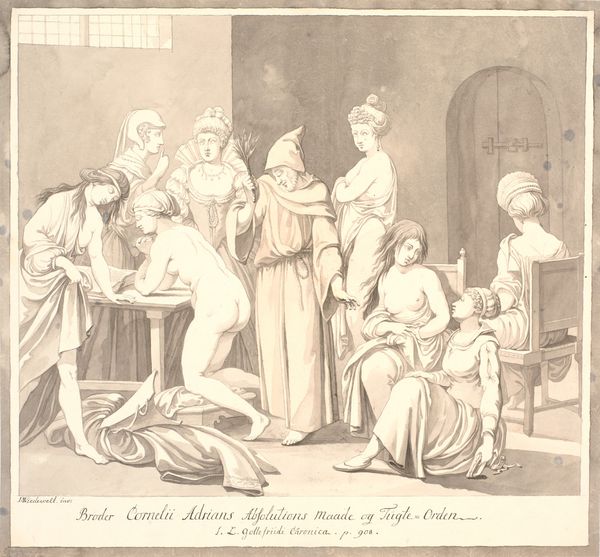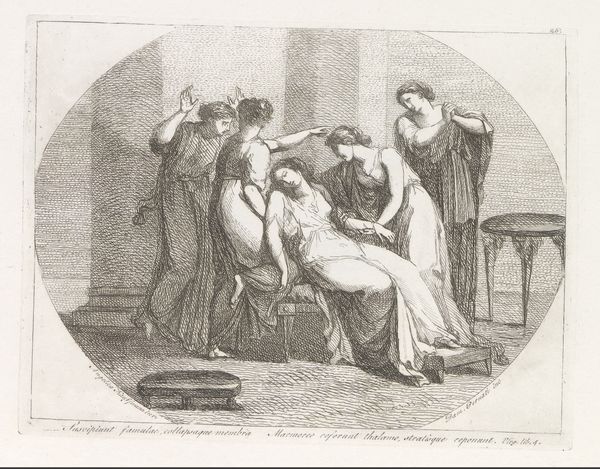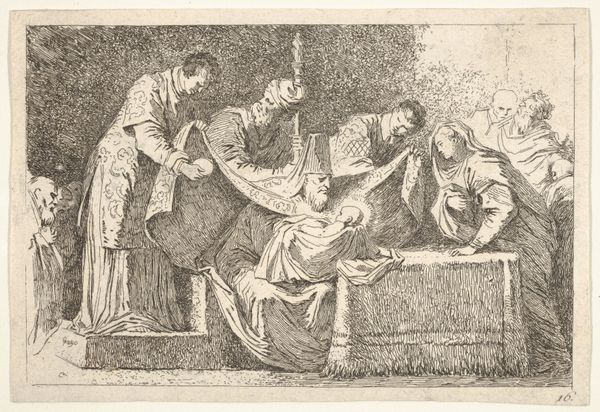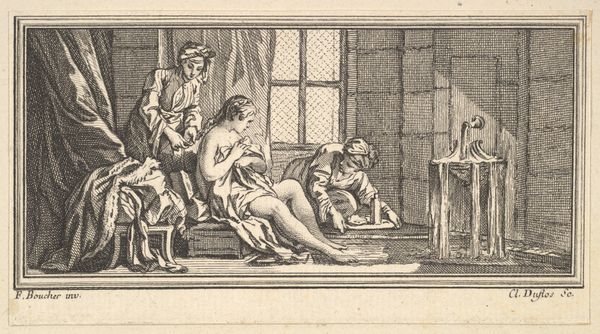
drawing, paper, ink
#
drawing
#
pencil sketch
#
greek-and-roman-art
#
figuration
#
paper
#
ink
#
line
#
history-painting
Copyright: Public domain
Curator: John Flaxman created this ink drawing on paper, "Illustration to the Iliad," in 1795. I'm immediately struck by the stillness, almost a suspended moment in time. The delicate linework gives it an ethereal quality. What do you see? Editor: The first thing that grabs me is the material simplicity. It's just ink and paper, cheap and readily available, used to depict such monumental themes—war, grief, divine intervention. There’s an interesting tension there between the materials and the subject. Curator: Yes, a beautiful tension. The medium feels very intentional, allowing the purity of form to speak volumes. Each line, though minimal, carries immense weight, especially when depicting these figures laden with emotional narrative from The Iliad. There's such raw, unveiled vulnerability captured through just line and shade. Editor: Exactly. And it highlights the means of production. Flaxman wasn't relying on expensive oils or marble. This was accessible art, designed to be reproduced and disseminated. The neoclassical style is almost industrial, emphasizing standardization over individual artistry in some sense. Were these designs created for mass consumption? Curator: Very possibly. Flaxman produced numerous illustrations for literary works, catering to a growing literate public with an interest in classical literature. He distilled complex narratives into these incredibly concise and emotionally resonant images. This allowed people who may have had little access to painting and sculpture to encounter these stories and forms through these affordable drawings and prints. Editor: That's crucial. Art for the masses, using humble materials and replicable processes. And I’m particularly drawn to that female figure in the scene to the left: it makes me wonder about women’s domestic labor that helped sustain classical knowledge at this moment in time. Who manufactured these papers? Where did the inks originate? The drawing’s subjects invite a materialist exploration into its modes of artistic production. Curator: An incisive perspective, bringing that historical background to bear. I keep coming back to the way the minimal linework creates a space for profound contemplation; the emptiness seems full of longing and reflection. The whole composition seems to breathe with this silent emotion. Editor: Precisely. And it’s amazing to realize that such powerful stuff—grand epics of heroes and gods and loss—could be rendered, multiplied, and brought into the lives of everyday people, all by lines traced from accessible material things. That’s the real enduring power in what Flaxman did here.
Comments
No comments
Be the first to comment and join the conversation on the ultimate creative platform.
